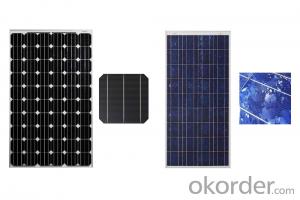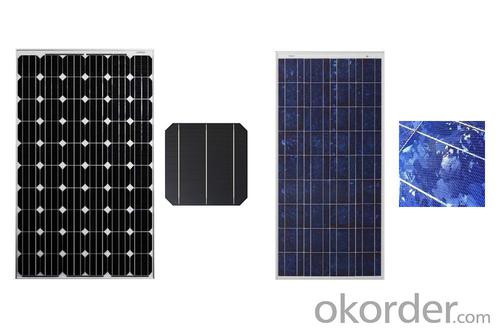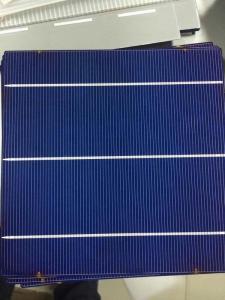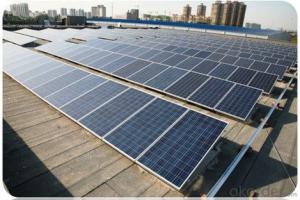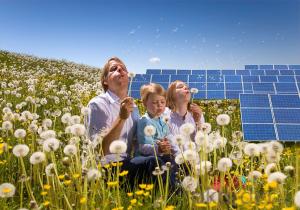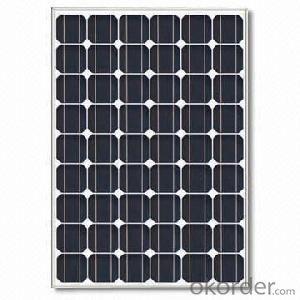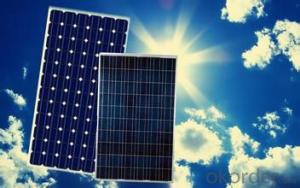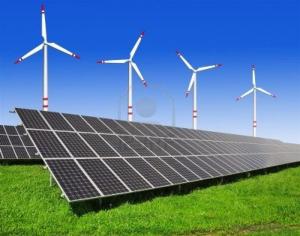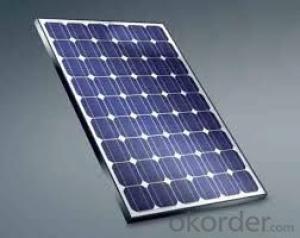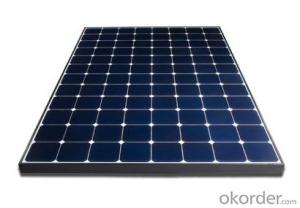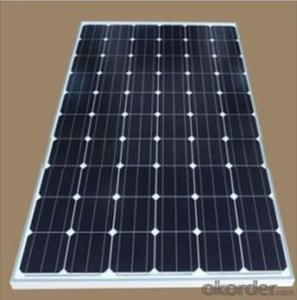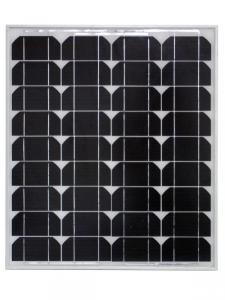40W Mini Monocrystalline Solar Panels on House Roof CNBM
- Loading Port:
- Qingdao
- Payment Terms:
- TT OR LC
- Min Order Qty:
- 10 set
- Supply Capability:
- 300000 set/month
OKorder Service Pledge
OKorder Financial Service
You Might Also Like
Mini Monocrystalline Solar Panel with 40W
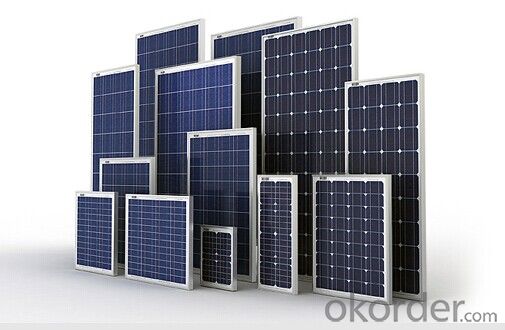
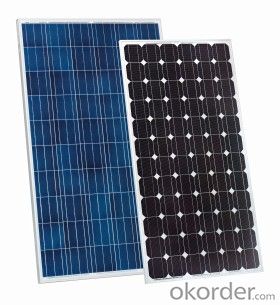
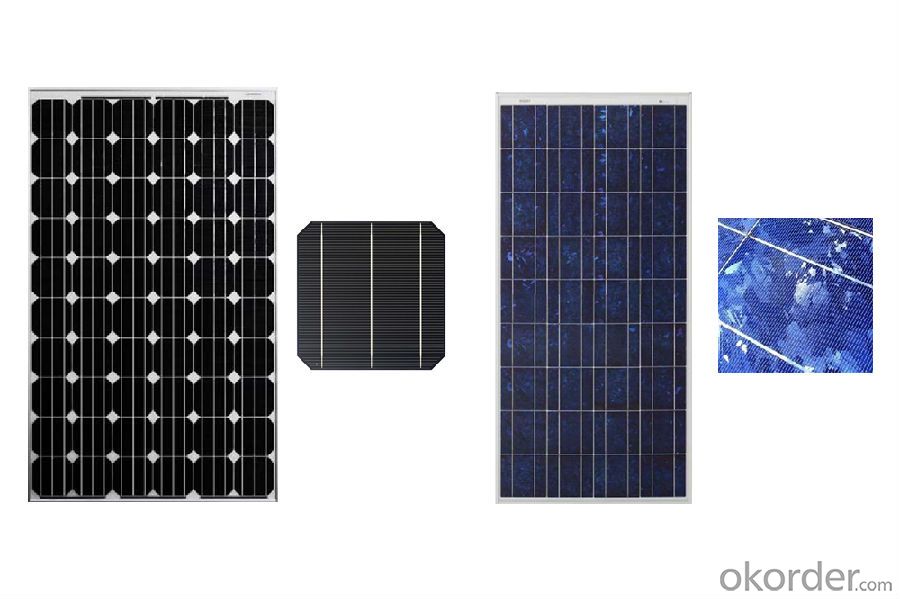
Monocrystalline Solar Modules
We offers a range of small, medium and large monocrystalline solar modules, designed for a range of requirements.
Specifications:
Tolerance | +/- 3% |
Cell | Monocrystalline silicon solar cells |
N0. of Cells | 72 (12 x 6) |
Dimension of Modules (mm) | 1581 x 809 x 40 |
Weight (kg) | 15.5 |
Limits:
Operating Temperature | -40~+85? |
Storage Temperature | -40~+85? |
Maximum System Voltage | 1000 VDC max. |
Hail Impact | Diameter of 28mm with impact speed of 86km/h |
Temperature and Coefficients:
NOCT | 48C+/-2? |
Voltage temperature coefficient (%/K) | -0.34 |
Current temperature coefficient (%/K) | 0.09 |
Power temperature coefficient (%/K) | -0.37 |
Characteristics:
Model: | SGM-160D | SGM-165D | SGM-170D |
Max-power voltage Vmp (V) | 34.5 | 35.4 | 35.8 |
Max-power current Imp (A) | 4.64 | 4.66 | 4.75 |
Open-circuit voltage Voc (V) | 41.75 | 43.6 | 43.32 |
Short-Circuit Current Isc (A) | 5.32 | 5.08 | 5.38 |
Max-power Pm(W) | 160 | 165 | 170 |
Model: | SGM-175D | SGM-180D | SGM-185D |
Max-power voltage Vmp (V) | 36.1 | 36.2 | 36.2 |
Max-power current Imp (A) | 4.85 | 4.97 | 5.11 |
Open-circuit voltage Voc (V) | 43.68 | 43.8 | 44.8 |
Short-Circuit Current Isc (A) | 5.49 | 5.48 | 5.51 |
Max-power Pm(W) | 175 | 180 | 185 |
STC: Irradiance 1000W/m2, Module temperature 25?, AM=1.5
Monocrystalline Solar Panels Specifications Range
Maximum Power (Pm) | Dimension | Weight | Operating Voltage (Vmp) | Operating Current (Imp) | Open Circuit Voltage (Voc) | Short Circuit Current (Isc) |
3W | 158x241x25mm | 0.5kg | 8.5V | 0.36A | 10.5V | 0.4A |
4W | 308x166x25mm | 0.77kg | 8.5V | 0.47A | 10.5V | 0.54A |
4W | 308.x166x25mm | 0.77kg | 16.8V | 0.24A | 21V | 0.27A |
5W | 296x215x25mm | 0.3kg | 16.8V | 0.48a | 21V | 0.54A |
10W | 286x406x25mm | 1.5kg | 16.8V | 0.59A | 21V | 0.66A |
12W | 286x406x25mm | 1.5kg | 16.8V | 0.71A | 21V | 0.8A |
14W | 286x541x25mm | 2kg | 16.8V | 0.83A | 21V | 0.96A |
16W | 286x541x25mm | 2kg | 17.2V | 0.93A | 21.5V | 0.99A |
18W | 296x541x25mm | 2.4kg | 18.8V | 1.07A | 21V | 1.2A |
20W | 296x641x25mm | 2.4kg | 17.2V | 1.15A | 21.5V | 1.24A |
24W | 541x451x25mm | 3.15kg | 16.8V | 1.14A | 21V | 1.56A |
26W | 541x451x25mm | 3.15kg | 17.2V | 1.51A | 21.5V | 1.63A |
30W | 296x966x25mm | 3.85kg | 16.8V | 1.78A | 21V | 2.03A |
36W | 541x641x35mm | 4.7kg | 16.8V | 2.14a | 21V | 2.4A |
40W | 541x641x35mm | 4.7kg | 17.2V | 2.33A | 21.5V | 2.5A |
55W | 1057x457x35mm | 6.6kg | 17.6V | 3.12A | 21.6V | 3.3A |
70W | 546x1196x35mm | 8.5kg | 16.8V | 4.15A | 21V | 4.7A |
75W | 546x1196x35mm | 8.5kg | 17.2V | 4.36A | 21.5V | 4.8A |
80W | 546x1196x35mm | 8.5kg | 17.6V | 4.55A | 21.6V | 4.9A |
110W | 1066x811x40mm | 11.8kg | 17.6V | 6.25A | 21.6V | 6.6A |
150W | 1066x811x40mm | 14kg | 34.4V | 4.36A | 43.2V | 4.7A |
- Q: Which of these units determines how much electric energy a solar panel can generate?
- Have okorder . It might surely benefit anyone!
- Q: I need a new roof soon and I was wondering what the difference in cost would be from a standard shingle roof to a roof including solar panels. Does anyone know the cost difference?
- The solar panels are very expensive to provide much power. If u go that way do not skimp on the support as a high wind will blow them away. In Ecuador I put in a remote site for communications. It was working good when a Strong wind blew $0.000 worth of solar panels all over the jungle.
- Q: Can solar panels be used for powering outdoor lighting?
- Yes, solar panels can be used to power outdoor lighting. Solar panels convert sunlight into electricity, which can be stored in batteries and used to power outdoor lights during nighttime. This allows for cost-effective and environmentally friendly outdoor lighting solutions.
- Q: i want to know how to hook up solar panels to my existing power. all i can find on the internet is to use batteries and a inverter. but i want to use all of my existing lights and outlets off of the solar energy. i have heard that you can actually turn the meter backwards and use supplied power when needed. thats what i want to do and is it possible to do myself and if so, how?
- Hooking up without batteries is actually the most common way to do it, but it's a non-trivial project, and dangerous if you don't know what you're doing. There is a device called a grid-tied inverter - that performs the task of putting energy back into the power grid. The reason you don't see homemade panels being hooked to the grid is because the power company's permission is required, and they will not grant it unless you meet building codes, and those codes require parts with at least a UL listing. No homemade panels would quality.
- Q: Hi,I am thinking about getting solar panels installed. # I like to cut my electric bill. #2 I like to eliminate my oil boiler and use some sort of electric boiler.I use about 5000-30000 KW per hour( winter-summer). My oil bill is around 600 month winter time. Over all i pay around 4000 a year. My electric bil now is around 2000-2500 year. Is this possible? I live in NY. I heard you can get up to $35000 rebate from LIPA( Electric company) and 2k from federal and 5k from State( is the state or federal every year?, how does that work). Any help is appreciated.
- There is a variety of information available on the internet regarding solar panels. You didn't say if you were interested in installing a photo-voltaic system to generate electricity, or if you wanted a passive solar system. From what I've read, the method that would give you the greatest payback for your investment is the passive solar heater. I can't give you exact instructions on how to construct one of these units, but there are many websites with instructions. My older brother had one of these mounted on his old farmhouse. He said his furnace didn't run all day during the cold Wisconsin winters. The government rebates or tax credits are usually a one time deal. They may pay for part of your installation, but they won't cover the whole cost. The only thing I've heard of that will pay you every year is a wind generator tied into the electric grid, but thats another posting. I'm including a link to a site that will show you how to build a cheap solar heater that you can try yourself.
- Q: Got a small project here in a remote location. There is to be a 2 volt deep cycle battery, the equipment to be powered from battery and solar panel to charge battery. The 2 volt battery puts out 55 AH. the max constant power draw from the equipment to be powered is 7.9 watts. Will a 30 watt panel at 2 volts be enough to run this system during sunlight and charge the battery for the equipment to run overnight?And, at 55 AH, how long can I keep a constant draw of 7.9 watts without a recharge?Thanks to all the input!
- Will a 30 watt panel at 2 volts be enough to run this system during sunlight and charge the battery for the equipment to run overnight? Maybe theoretically, but you're going to have very little margin for losses and clouds. I'll bet it has very little power when cloudy. 7.9/30 = 0.26. So at 00% efficiency, you'd need it to be charging more than 25% of each 24 hour period. In a summer with long days and a climate with few clouds, you might make it. But I think you're very close to the edge. And, at 55 AH, how long can I keep a constant draw of 7.9 watts without a recharge? For an ideal battery: time = Q V / P time = 55 A h * 2V / 7.9W time = 83 hours So you've got pretty good margin on your battery.
- Q: How do solar panels impact the energy independence of a region?
- Solar panels can significantly enhance the energy independence of a region by generating clean and renewable electricity. By harnessing the power of the sun, solar panels reduce dependency on fossil fuels, which are often imported from other regions or countries. This increased reliance on solar energy can help reduce the costs associated with importing and transporting traditional energy sources, thus promoting greater energy self-sufficiency. Additionally, solar panels enable communities to generate their own electricity, reducing their reliance on centralized power grids and fostering local energy production. Overall, solar panels play a crucial role in enhancing the energy independence of a region by providing a sustainable and locally-sourced energy solution.
- Q: Can solar panels be used in multi-story buildings?
- Yes, solar panels can be used in multi-story buildings. They can be installed on rooftops or other suitable areas to generate renewable energy for the building.
- Q: Hey was looking at a 5 watt 2 volt solar panel and was wondering if it'd be enough to power a regular light bulb. Also need to power a 5volt 6.5 amp pump for at most a minute at a time. So basically if I had this panel would I be able to plug a lamp into it and have it light for 5+ hours at a time with the possibility of running the pump? If not what size panel would I need?
- The specifications you give say the solar panel produces 5 watts at 2 volts (DC) so that isn't enough voltage to power an ordinary (20-volt) light bulb. You could get 0 of these panels and connect them in series so they put out a total of 20 volts and the total power available would be 50 watts. The panels would light the bulb that way, provided the bulb isn't over 50 watts and you can afford the panels. A panel does provide enough power for a 2-volt car light bulb less than 5 watts. However, the maximum current you can get from these panels is .25 amperes (5 watts divided by 2 volts = .25 A.) This isn't enough power to run your pump which takes 6.5 amperes - at 20 volts, that would be 780 watts. Another thing to check is the pump motor; many electric motors are designed to run on AC only and will be damaged if you try to run DC through them. Remember solar panels produce DC so the raw output from a panel will not work on an AC motor.
- Q: How much roof space is needed for solar panels?
- The amount of roof space needed for solar panels varies depending on various factors such as the size and efficiency of the panels, the energy requirements of the building, and the geographical location. However, on average, a typical residential solar panel system requires approximately 100 to 400 square feet of roof space.
Send your message to us
40W Mini Monocrystalline Solar Panels on House Roof CNBM
- Loading Port:
- Qingdao
- Payment Terms:
- TT OR LC
- Min Order Qty:
- 10 set
- Supply Capability:
- 300000 set/month
OKorder Service Pledge
OKorder Financial Service
Similar products
Hot products
Hot Searches
Related keywords
